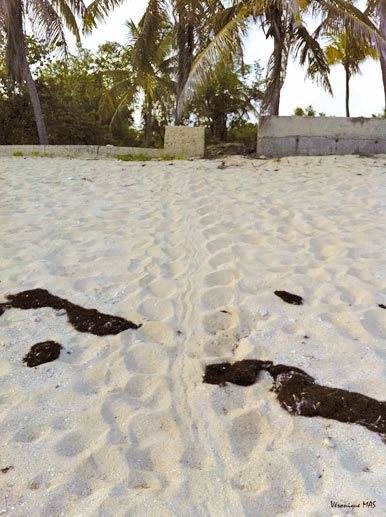The first nest of green sea turtle this year was noted on May 12 at Plum Bay.
The second was a hawksbill sea turtle nest recorded on May 29 on Tintamare.
By late June, the Réserve had counted nine nests on Tintamare, five at Plum Bay, one on Pinel, and one on the beach at Grandes Cayes.
A total of 57 eco-volunteers - that the Réserve thanks for their work (often thankless as the turtles are not always there, but always useful from a scientific point of view) - got up early in the morning to check out the eight beaches listed as egg-laying sites in order to look for turtle tracks.
The Réserve is also responsible for a ninth site, that of Tintamare.
This number of nests is rather low and indicates the amount of work that remains to be done (dealing with too much light on the beaches, parking of cars, too much noise, keeping the sites clean) in order to make sure that these sea turtles continue to lay their eggs in St Martin in the future.
In Guadeloupe, for example, there can be as many as five or six egg-laying sites every day on the beaches where the turtles are most frequently observed.
Remember that any sort of disturbance at nights during the egg-laying season (March-October) can cause these protected turtles to make a U-turn and not lay their eggs on our beaches, making these fragile species even more endangered than before
Sea Turtles at risk
Tracks left by a green turtle on the beach of Plum Bay © Véronique Mas

















